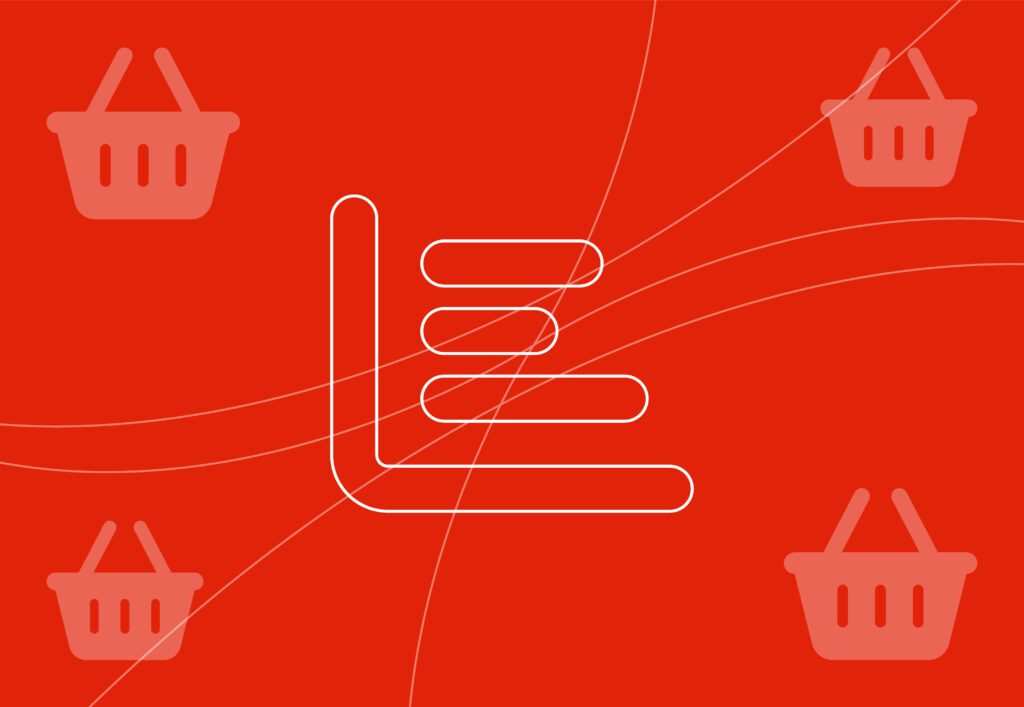
15 ways to reduce cart abandonment and increase sales

Cart abandonment is one of the toughest challenges for e-commerce businesses in the modern world of online shopping. Multiple industry reports have indicated that cart abandonment accounts for a huge amount of revenue lost, but how do we solve this problem?
The good news is that there are so many effective solutions to reduce cart abandonment, many of which can be set up with little risk and high reward. In this blog, we’ll cover 15 proven cart abandonment solutions that can help increase revenue sitewide.
1. Simplify the checkout process

One of the main things that leads to cart abandonment is a lengthy checkout process. If you’re making customers check out over multiple pages or fill out long forms, this reduces the likelihood of customers abandoning their purchase just to buy one item.
To help reduce cart abandonment, try to make your checkout process as simple as possible. 37% of online shoppers abandon their cart because they don’t want to create an account, so always ensure you offer guest checkout with autofill options for customer information and address details.
Including “other ways to pay” like linking PayPal payment methods also helps customers follow through with their purchase, as they can click one button all information is provided.
Always make tax, shipping and conversion rates clear when items are added to the cart.
High extra costs account for 39% of cart abandonment rates, so it’s crucial that you are honest with any additional fees before checkout. Always display shipping costs early in the shopping process. If a customer is logged into their account and they have provided their details, this should be automatically calculated when items are added to the cart.
You can also offer a shipping calculator for guests.
If you ship internationally, always ensure you have the geolocation setting set up to ensure prices, currency and shipping are automatically adjusted for that country.
3. Offer a variety of payment options
There is no longer a single universal payment method when buying online, and variety is important to ensure every customer can pay using their desired method. Varied payment methods are one of the easiest cart abandonment solutions.
Ensure you have multiple payment options, like:
- Debit and credit cards
- Google Pay or Apple Pay
- PayPal
- Buy Now, Pay Later services like Klarna
- Gift cards (if you offer this)
The wider the variety of payment options, the fewer excuses customers have to not go through with payment.
4. Utilise exit pop-ups
To help retain customers at the last minute, exit pop-ups are a brilliant option. You can create pop-ups with persuasive information like “free shipping available” or even offers for discounts like “10% off your order if you buy now”.
These strategies can reduce cart abandonment by a significant percentage, and savvy customers know to expect these sorts of offers from premium retailers.
5. Send emails about abandoned carts

One of the most commonly used cart abandonment solutions is to send emails to shoppers reminding them about their cart. With the right email strategy, you can help reduce cart abandonment by 10 to 15%. You can set up automated emails with persuasive CTAs that encourage users to return to their accounts and also offer exclusive discounts in the email to help encourage a sale.
For effective cart recovery, ensure:
- Send a reminder email within an hour of abandonment
- Follow up with another email or after 24 hours if they don’t initially respond
- Include images of items in the cart as a reminder
6. Optimise mobile checkout
Mobile phone searches make up 60% of internet traffic, so ensuring your website is optimised for mobile use is essential.
Fast loading times are essential on mobile, and your website needs to be easy to navigate and adapted for a smaller device. You’ll also want to minimise the amount of typing, clicking and scrolling on mobile and features like autofill can be a huge benefit.
Ensure buttons are large and easy to tap, and test your checkout on multiple mobile devices like tablets and smartphones.
In the modern world, with the majority of transactions taking place on mobile devices, an effective mobile experience is essential to prevent cart abandonment.
7. Increase page loading speed
Slow websites and lagging can be frustrating for users, and this can decrease sales. Research has shown that a delay as little as 1 second can reduce conversions by up to 7%, so the need for fast-loading pages is clear.
There are a number of ways to help speed up your pages, including:
- Compressing on-page videos and images
- Minimising scripts and plugins
- Use a Content Delivery Network (CDN)
- Using reliable web hosts
Remember that site speed can have a direct impact on sales, so ensuring your website is fast is one of the most effective ways to reduce cart abandonment.
8. Use security badges and certificates

When a customer enters a website, they will naturally look for indicators that this website is safe. If your checkout page doesn’t seem secure, customers won’t follow through with their purchase, so the right safety measures are paramount.
At checkout, ensure you display SSL certificates to show customers your website is verified, encrypted and protected. A padlock sign and security badges from antivirus software like McAfee are also visual cues for safety during payment.
Always ensure the payment gateways you offer are trusted and well-respected. Third-party options like PayPal are always recognised as secure and offer alternative payment methods for customers too.
9. Make the most of retargeting ads
If you’ve been browsing online and exited a page without buying, you might have noticed ads for the products you were interested in on other platforms like Google or TikTok. These are retargeting ads and are a brilliant marketing tactic that helps bring back interested customers and recover abandoned carts.
This is a proven tactic, with 26% of users returning to a website as a result of remarketing. Retargeting keeps your brand visible to users who have previously interacted with your site and ensures recognition even after customers leave.
Many customers simply forget they have a product in the basket, and re-targeted ads can be a more gentle reminder to customers that can work more efficiently than several emails constantly reminding users of abandoned carts.
Setting up retargeting adds is simple across platforms like Google Ads and is a low-risk, high-reward solution to cart abandonment and can help create loyal customers.
10. Use scarcity tactics to create urgency
Creating a sense of urgency is a powerful tactic that encourages customers to act quickly and purchase before it’s “too late”.
eCommerce sites, particularly fashion retailers, adopt urgency tactics like low stock indicators to encourage users to purchase before their items are gone. Deploy these scarcity tactics on your checkout page:
- Messages like “Only 2 left in stock! Buy now” indicate low stock
- Limited time offers with countdowns “Ends in X hours X minutes”
- Highlight free delivery offers: “Order by 3 pm for next day delivery”
Scientific studies have even been conducted into the effectiveness of scarcity tactics, with researchers finding that “scarcity cues have a positive and robust effect” on customer retention.
11. Offer save for later options
Often, customers may abandon carts because they are not yet ready to make the purchase, but they intend to do so at a later date. Creating wishlists or “safe for later” options allows customers to register their interest and makes it easier for them to return.
These features can help improve recovery rates. Notifying customers that an item on their wishlist or “save for later” is currently on sale is also a great way to ensure a purchase is made even after the cart has been abandoned.

On the internet, opinions of other consumers are a crucial factor that influences e-commerce. Users are far more likely to follow through with a purchase if they see positive reviews from other customers and recommendations from fellow consumers.
Examples of social proof that help reduce cart abandonment include:
- Clear customer reviews and star ratings. Over 50% of people will avoid a business if they have less than a 4-star average rating, so positive ratings are essential.
- Photos and videos of users with your products or a social media carousel showcasing products in use.
- For more professional services, testimonials and case studies can be a compelling factor for investing in a product or service.
- Notifications of popularity: “X users are viewing this item right now” or “X people bought this item in the last 24 hours”. Many websites also adopt a flame symbol on “hot” items to indicate their popularity.
Social proof has been proven to reinforce trust in users, and as such, this is a valuable tactic that can encourage customers to trust your products and services.
13. Offer live chat or customer support
Sometimes a customer might leave a website and abandon their cart to conduct further research on a product or service details, like shopping or returns info. Adding a live chat box option allows customers to get the answers to all their questions without having to leave the page.
These chat options can also be simplified with AI chatbots, which can offer 24/7 support for more basic questions. You can then relieve the pressure on human agents and only use them for more complex questions and queries.
14. Personalise checkouts
Online shoppers are more likely to complete a purchase if the checkout process is tailored to them. Not only does the payment process need to be smooth, but it needs to feel convenient for the customer.
To help create a stronger sense of connection with the customer, there are a few methods used to personalise the checkout process.
Show customers’ items that are often bought alongside items in their cart, or products that are similar to items in a basket. This is a more gentle way to increase order value without being too aggressive.
Location-specific customer data, like displaying local shipping rates or reviews from users in their area can help to make customers feel more valued and recognised. This, in turn, makes customers less likely to abandon their carts.
15. Time incentives
There is a range of incentives that can be used to help retain customers, but these should be used strategically to encourage sales at the right time. Knowing when and how to present offers to your customers is crucial in solving cart abandonment issues.
80% of consumers are more likely to shop with new brands when offered a first-time buyer discount, making coupons an easy way to boost your sales and entice new customers.
Loyalty points also help to create long-term loyalty, with customers returning for the incentive of money off or free items in the future.
The most important thing to remember is when to time your promotions to have the best effect.
Turn browsers into buyers with the right marketing
If you’re trying to reduce cart abandonment, this doesn’t have to be a tricky task. With the right marketing techniques, strategic ads and data-driven insights, you can keep customers on your site and complete sales.
If you’re unsure how to create an effective marketing strategy, we’re here to help at Embryo. We have a specialist team of strategists covering everything from paid advertising to content optimisation. Our team can review your site and create an effective plan to transform your eCommerce platform, grow your name and increase revenue.
Get in touch today, and we’ll help build a profitable checkout process.



